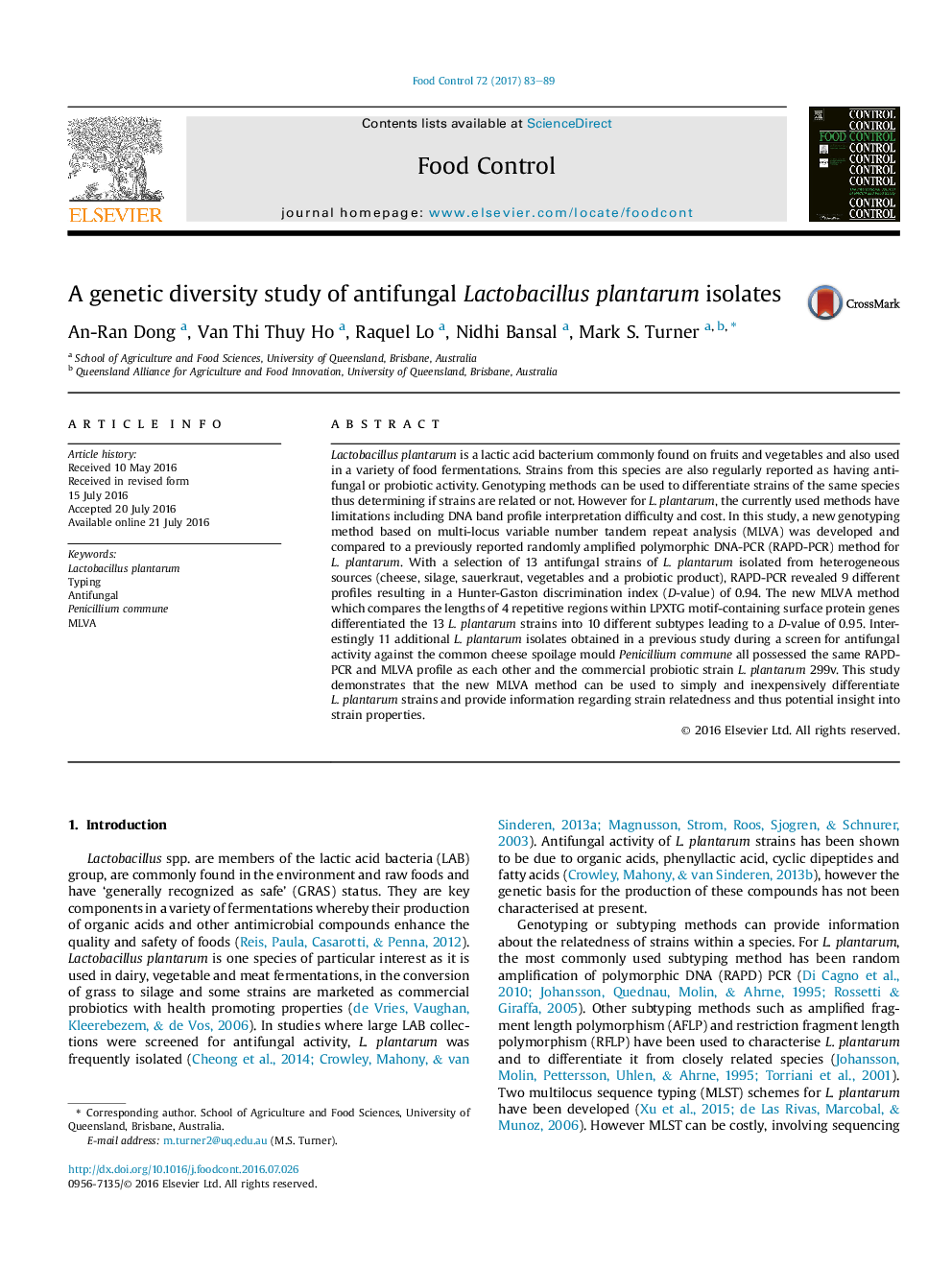| کد مقاله | کد نشریه | سال انتشار | مقاله انگلیسی | نسخه تمام متن |
|---|---|---|---|---|
| 4558951 | 1330401 | 2017 | 7 صفحه PDF | دانلود رایگان |
• A new MLVA method for typing Lactobacillus plantarum strains was developed.
• MLVA targeted repetitive regions within 4 genes encoding LPXTG surface proteins.
• MLVA was more discriminatory than a previously reported RAPD-PCR method.
• Antifungal L. plantarum strains are genetically heterogeneous.
Lactobacillus plantarum is a lactic acid bacterium commonly found on fruits and vegetables and also used in a variety of food fermentations. Strains from this species are also regularly reported as having antifungal or probiotic activity. Genotyping methods can be used to differentiate strains of the same species thus determining if strains are related or not. However for L. plantarum, the currently used methods have limitations including DNA band profile interpretation difficulty and cost. In this study, a new genotyping method based on multi-locus variable number tandem repeat analysis (MLVA) was developed and compared to a previously reported randomly amplified polymorphic DNA-PCR (RAPD-PCR) method for L. plantarum. With a selection of 13 antifungal strains of L. plantarum isolated from heterogeneous sources (cheese, silage, sauerkraut, vegetables and a probiotic product), RAPD-PCR revealed 9 different profiles resulting in a Hunter-Gaston discrimination index (D-value) of 0.94. The new MLVA method which compares the lengths of 4 repetitive regions within LPXTG motif-containing surface protein genes differentiated the 13 L. plantarum strains into 10 different subtypes leading to a D-value of 0.95. Interestingly 11 additional L. plantarum isolates obtained in a previous study during a screen for antifungal activity against the common cheese spoilage mould Penicillium commune all possessed the same RAPD-PCR and MLVA profile as each other and the commercial probiotic strain L. plantarum 299v. This study demonstrates that the new MLVA method can be used to simply and inexpensively differentiate L. plantarum strains and provide information regarding strain relatedness and thus potential insight into strain properties.
Journal: Food Control - Volume 72, Part A, February 2017, Pages 83–89
